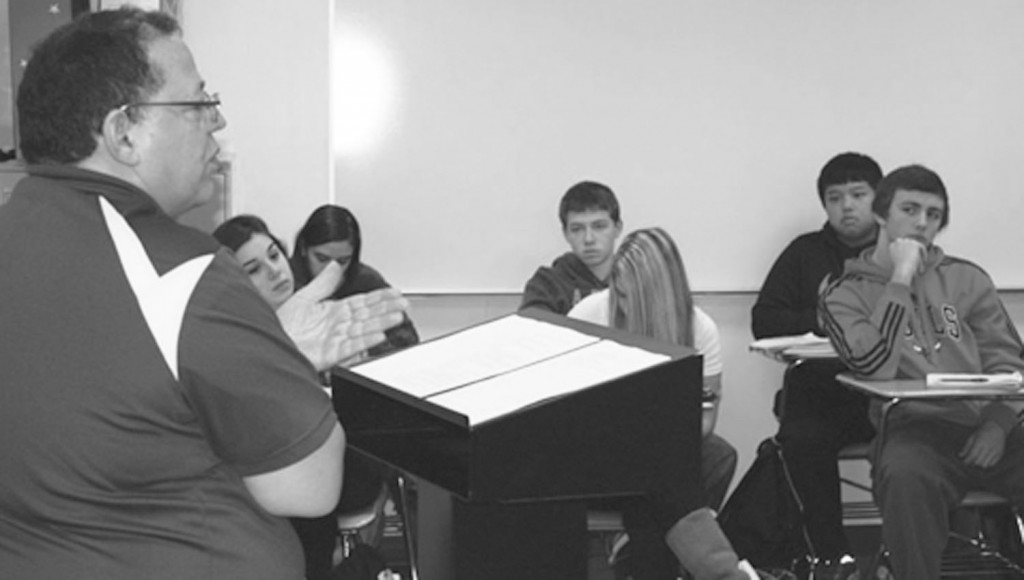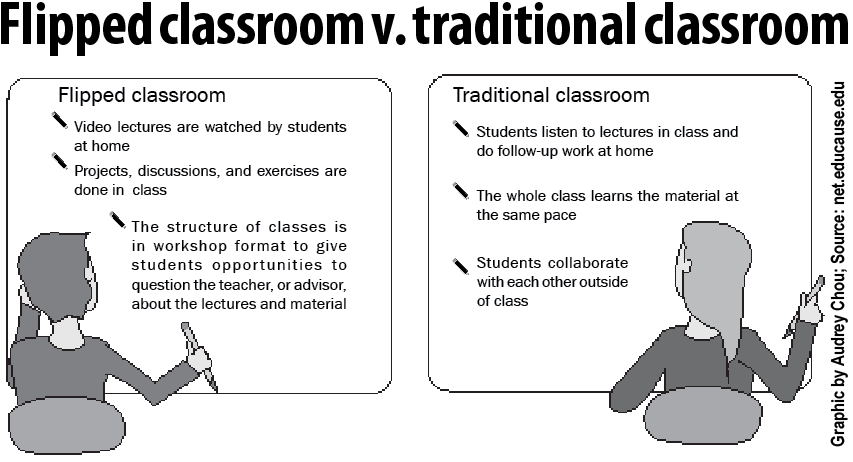
Seven years ago at a high school in Colorado, two chemistry teachers thought they had discovered a solution to the boredom and repetition of lectures.
According to Kari Arfstrom, the executive director of the Flipped Learning Network, the class started with their idea to record their lectures as a way to keep absent students on track, but quickly developed into a teaching tool now called flipped learning. Seven years later, the Flipped Learning Network has impacted classrooms across the nation.
Arfstrom said that the concept of “flipping” involves moving lectures outside of the classroom and into technology for the students to access on their own time. Instead of using class time to speak, teachers record themselves for their students to watch at home and attempt to utilize class time for more collaborative activities such as discussions, debates and practice questions.
The Flipping Learning Network is a professional association for teachers who want to know more about the learning style. The organization facilitates workshops, “webinars” and tools to eventually implement the practices they advocate. According to Arfstrom, the release of the book “Flip Your Classroom” standardized the idea of flipped learning and made many of the concepts tangible for educators. In the past year, the Flipped Learning Network’s newsletter has grown from 2,500 to 10,000 subscriptions.
“When [a teacher] records their lecture … they are less interrupted,” said Arfstrom. “When you come to class the next day you can sit down and talk about where you would apply the theories in real life.”
Ryan Bretag, the coordinator of instructional technology at Glenbrook North, has pushed to implement curriculum changes similar to those advocated by the Flipped Learning Network.
Bretag said that while he supports the idea of moving certain lectures out of the classroom, he would be hesitant to recommend that teachers stick to strictly recording lectures. Ideally, Bretag would like students to choose where they get their information.
“I support the notion of finding ways to re-deliver content,” Bretag said.
Instead of a class being collectively assigned to watch a single lecture, Bretag is excited about the possibility of providing different sources of literature, media and lectures to teach similar information. He explained the idea of a class receiving a textbook chapter, online lecture, video link and magazine article all about the same topic, but everyone could be given the choice of how to access their information. He thinks this could create different perspectives on the same material and appeal to all different learning styles.

Social studies teacher Jeffrey Kallay has considered similar teaching tools. Kallay said that first semester, his students completed their research papers “in a flipped setting.” As opposed to being given the assignment as homework, his students wrote their papers during class time.
While many of Kallay’s ideas are similar to those promoted by the Flipped Learning Network, Bretag said that he and Kallay had considered the idea years ago.
“We were asking, ‘How do we rethink the delivery of content,’” said Bretag.
Kallay hopes to continue implementing certain teaching strategies that resemble parts of flipped learning second semester. He plans to videotape lectures that present basic facts to prepare students for activities such as higher-level discussions and debates.
Ellianna Sternberg, a student in Kallay’s U.S. History class, likes the idea of listening to his lectures at home. She said that his lectures are more engaging than the textbook, and are an easier way to obtain information. Sternberg also thought that aspects of writing her research paper during Kallay’s class were beneficial.
“It was nice that we could ask him questions,” said Sternberg. “He could help us with the research paper when we needed it.”
Kallay said that recording lectures would allow students to get information at their leisure and go back to parts of the video that they do not understand.
Arfstrom explained the benefits of flipped learning similarly. She said that it allows teachers to record their lectures more efficiently, gives students the opportunity to learn at their own pace and provides improved application of information.
Afstrom said that the number one benefit to this teaching style is “the personalization of learning.” She hopes that it will give teachers more time to spend with their students, and give students more individualized learning techniques.

